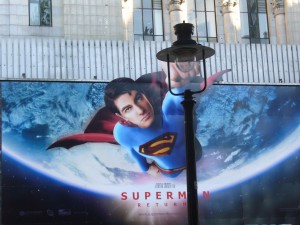
Americans are bombarded with advertising in every part of life. They go to a movie and are given ads for more movies. They watch TV and find nearly as much time is spent on the ads as on the programs. They drive down the street and see billboards and shop signs. They read the news and find it surrounded with appeals to get their money.
Advertisers must come up with a way to overcome the mental block set up by consumers. How can you get the public to notice your ad above the thousands of others? One method employed to do this is building curiosity with sounds and sights.
Music is often employed to enhance an ad. Many ads on television include music that will draw attention to the product. Other sounds are used as well. The 1950’s Superman series was loved by children because of the woosh sound when Superman landed or took off.
Visual anticipation is also used. A blanket over the newest model of a car builds curiosity. Women in ads sell more to both men and women than men do. Movie previews take a collage of clips to titillate the imagination and make people too curious about how it all falls together to miss the full show.
Using both sight and sound will give a greater advantage to an ad. The more senses that are addressed, the more likely it is that the consumer will notice. Yet, this becomes normal if everyone is doing it and again your ad is lost in the crowd.
Aerial Banners are unique in this way for they appeal to sight, sound, and they are the only ad around at the time. A long banner or a billboard trails behind an airplane over a large congregation of people. With no other ads in sight on a beach or music festival, the ad will have the full attention of the audience.
Imagine you are sitting on a beach, enjoying the sun when in the distance you hear the drone of an airplane. You have time and interest so you look up to check it out. Coming toward you is a single engine plane pulling a banner with a message written on it. Your curiosity rises. What does it say? You watch with anticipation until you can read the message and you probably do this several times in the 17 seconds it passes.
The plane passes by several times in the next hour, each time reminding you of the message of the banner. By then you have it memorized. The airplane alone causes the message to rehearse in your mind.
The advertiser has reached his goal. He has built your curiosity, used sights and sounds to present you the message, and repeated it without competition for attention until it was fixed in your memory. And no competitors could get a word in edgewise during that time. If his product or service is of use to you, it is pretty sure that his name will be your first choice.